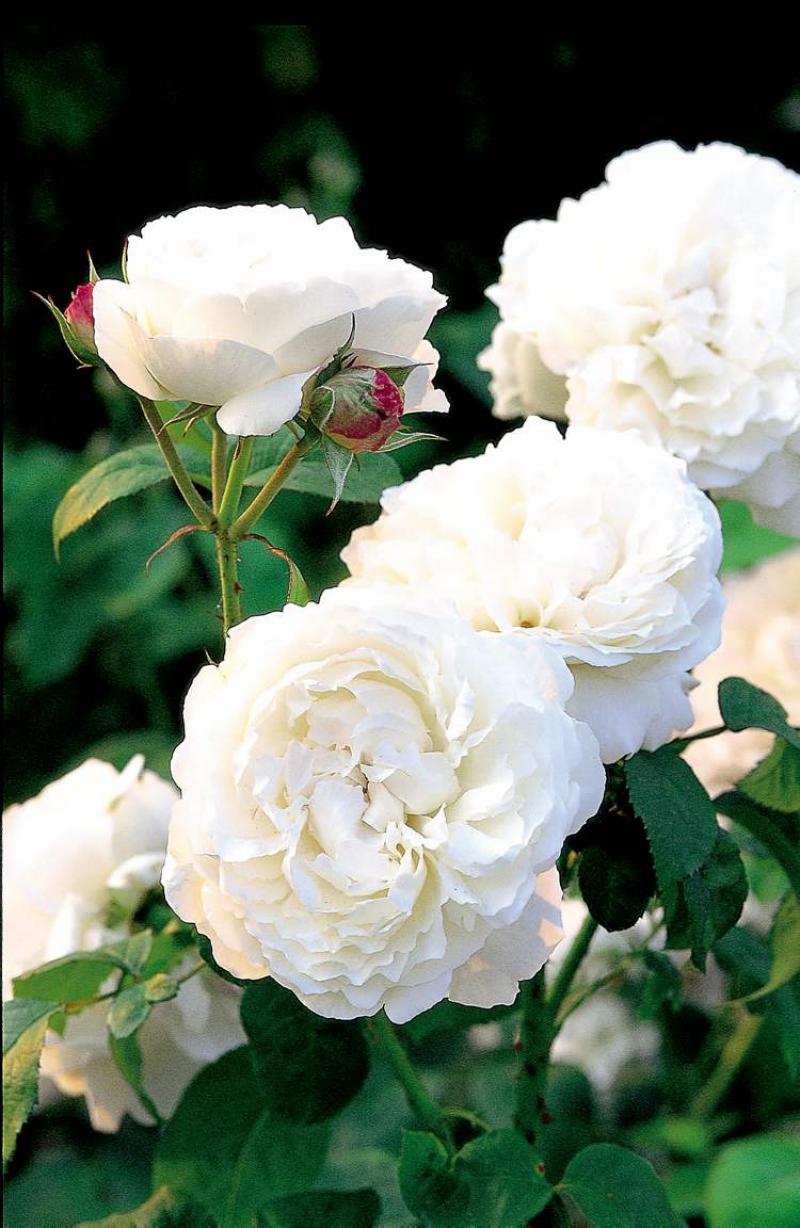
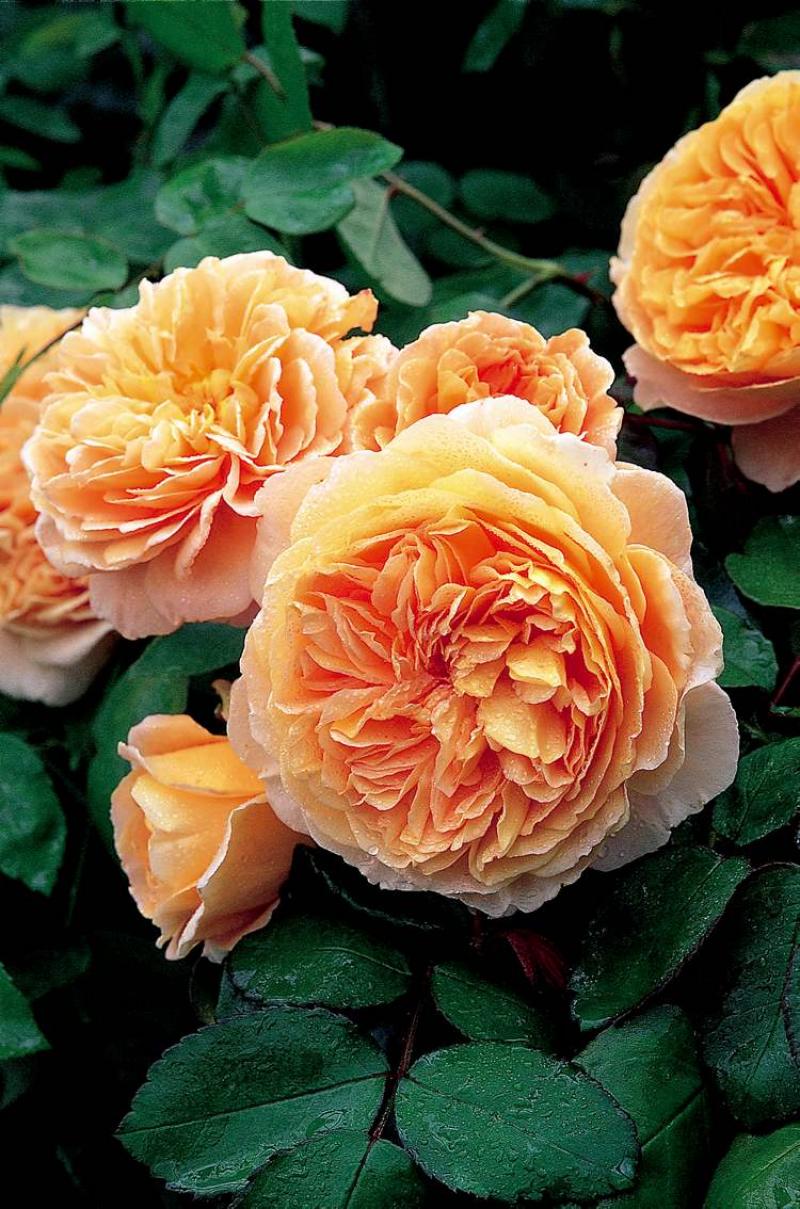
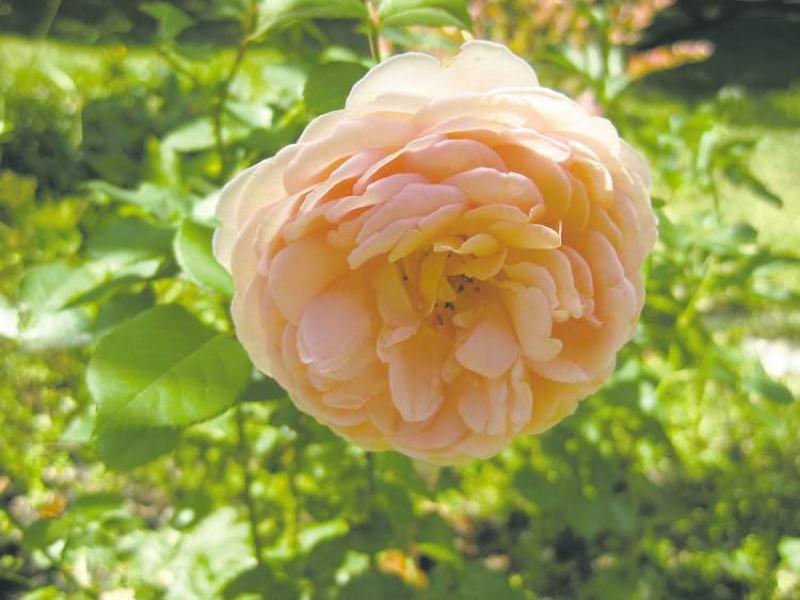
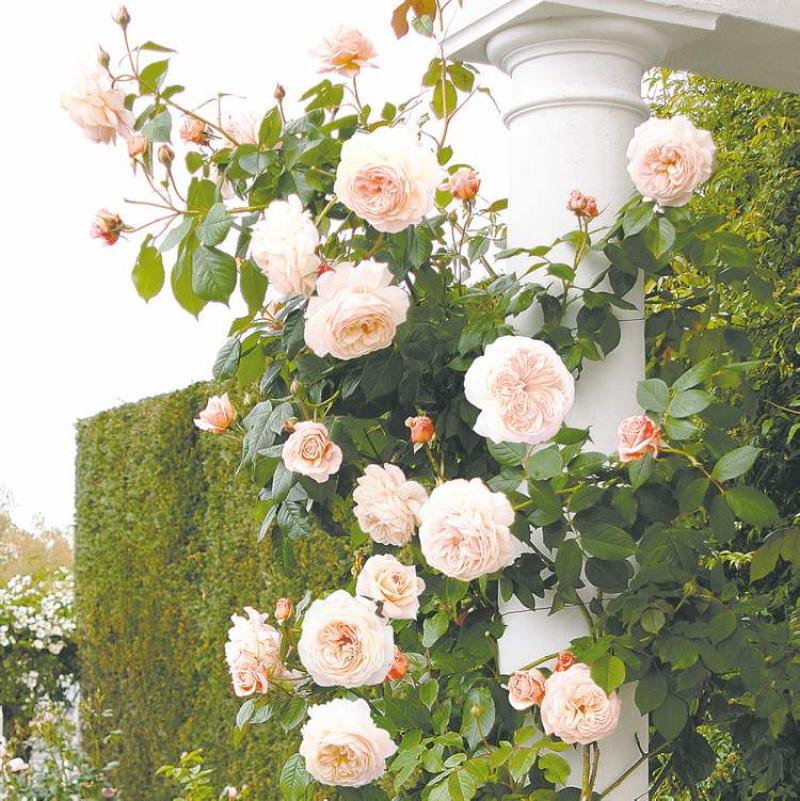
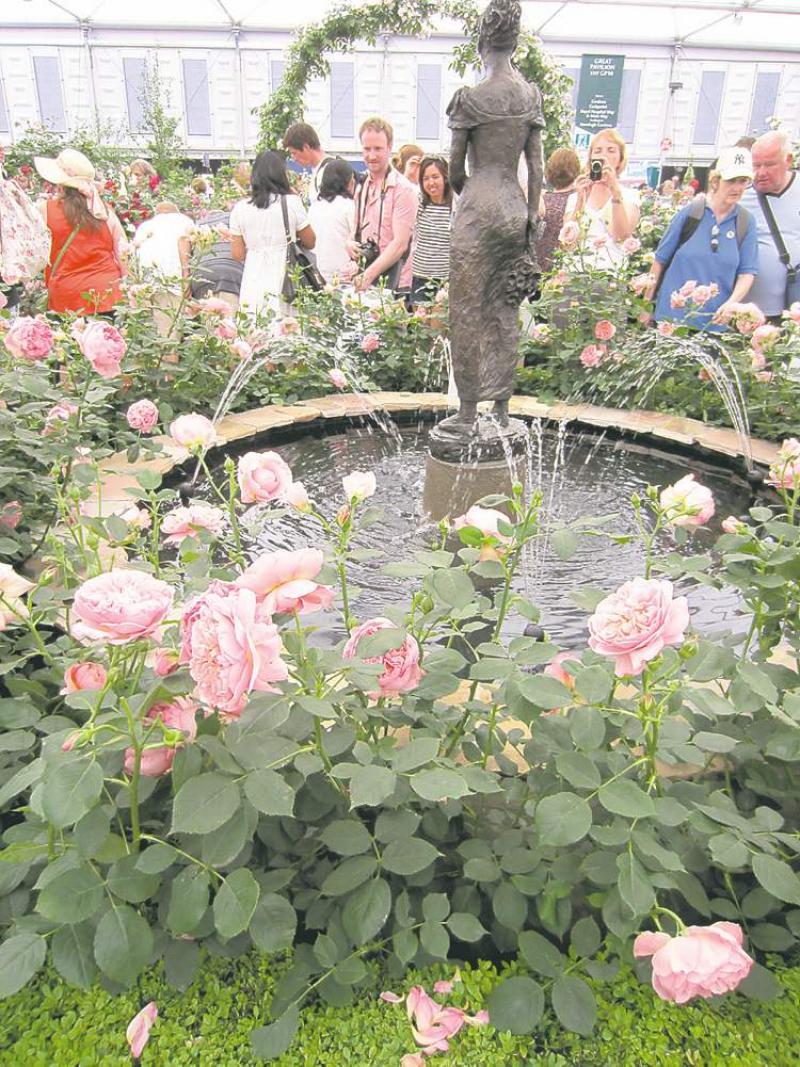
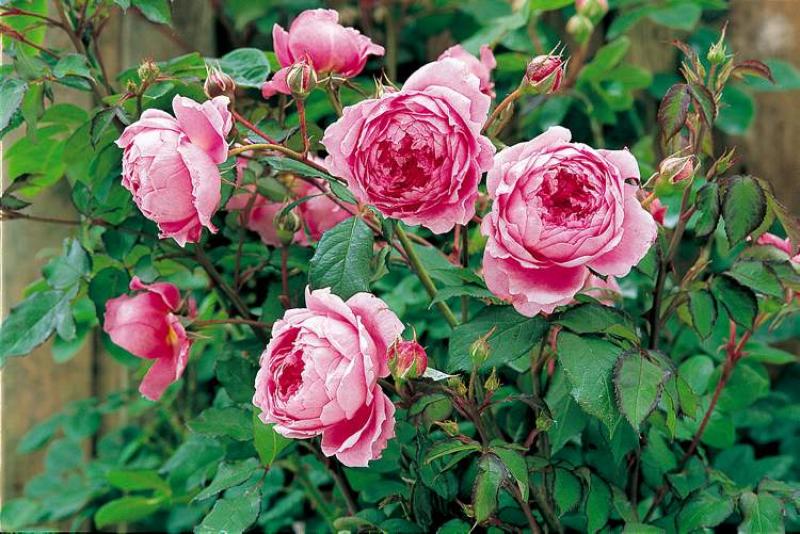
A living legend
LEGENDS are usually associated with someone or something from the distant past. David Austin is a living legend. Born in 1926, Austin has lived all of his life in Shropshire, England, on the same farm where he was born. His contribution to rose hybridization has made his name a household word even among those who only dream of growing any one of his magnificent roses in their garden.
David Austin roses are a perfect blending of old European roses with recurrent flowering and outstanding form and fragrance. A once-in-a-lifetime visit to the Chelsea Flower Show in London, England, does not have to be your only opportunity to see them. Although classified as Zone 4 or 5, more and more David Austin roses can be found growing in Manitoba gardens.
Today's contributor is Barbara Shields, busy lawyer by day and rose aficionado in her spare time. Shields grows several different varieties of David Austin roses in her St. Vital rose garden.
Eileen Rosen, a Charleswood gardener, has also been growing David Austin roses for many years and earlier this season purchased a Munstead Wood rose which has produced stunning dark, wine-red blooms this summer.
Rosen has enjoyed great success with David Austin roses and much of that success can be attributed to the careful planting, feeding, and winter protection which she faithfully gives them. "I add bonemeal, manure and compost to the bottom of the planting hole, then fill with regular soil and then repeat again with another layer of bonemeal, manure and compost. A thick layer of mulch on the soil surface protects the feeder roots. The cheapest and handiest way to mulch is with leaves."
In the past, Rosen has gone to Leaf-it-With-Us outlets in the fall for a supply of leaves, although the depots will close permanently at the end of September. "In late October or early November, cover the rose completely with leaves. Push the rose canes down and then begin piling the leaves on top until you have a big hill of leaves. If you don't cover it completely with leaves, the rose freezes right down to the ground and then it has to start all of the new stem growth again."
Colleen.Zacharias@gardensmanitoba.com
Sweet Juliet, Lady of Shalott, Wife of Bath, Tess of the D'Urbervilles -- the names of David Austin roses conjure up England's great literary giants: Shakespeare, Tennyson, Chaucer and Hardy.
Gardeners the world over have come to appreciate the romantic names, the exquisite colours and most of all the breathtaking fragrance of David Austin roses. So significant is their impact on gardening worldwide that "Austins" are now considered to be a unique category of roses known as English roses, equivalent to grandifloras, hybrid tea roses, Bourbons and Damasks.
The range of colours available is marvellous-- from the purity of creams and whites such as Litchfield Angel and Winchester Cathedral to the glorious golden yellows of Graham Thomas, Golden Celebration and Teasing Georgia. Or look for the delicate apricot tones of Abraham Darby, Tamora and Sweet Juliet, the vibrant pinks of Gertrude Jekyll and Jubilee Celebration, the deep crimson of Munstead Wood.
The temptation to collect these roses is tough to resist.
Apart from the amazing range of colours and shapes of blossoms, the common denominator for all the roses is their fragrance, which ranges from Old Rose to Myrrh to Musk.
Gardeners who have mourned the loss of fragrance in the development of many modern roses can enjoy the return of scent to the garden. A word of advice -- scent is most prevalent in warm moist weather and can be enjoyed at its best by drawing near to the flowers themselves. When planting companion plants, strongly scented flowers such as dianthus and nasturtiums should be avoided.
Dwarf, rounded plants that can be clipped to shape such as any of the Berberis varieties (ex. Royal Burgundy, Concorde or Ruby Carousel) pair well for a formal planting. For a more informal look, clumps of foliage plants with textured leaves such as lady's mantle or lamb's ears or the floral spikes of Veronica (speedwell) make for a striking combination.
While Austin roses are now grown the world over, they present a special challenge to Manitoba gardeners. Typically zone 4 or 5, they require extra care in planting and some winter protection given our harsher winter conditions. With good protection, they can be successfully over wintered, and promise the delight of beautiful blooms for years to come.
It starts at the planting. In many instances, roses are grafted onto more hardy stock and represent canes that belong to one rose variety and the roots to another. Alternatively, many of these roses are available on their own rootstock. Own root plants are grown from cuttings and both the roots and the canes belong to the same variety. The most delicate part of a grafted rose is the bud union, the place on the plant where the roots meet the stems or branches. It is recommended they be planted with the bud union about 3 to 4 inches below the surface of the soil. Dig a hole deep enough and wide enough to place the roots at this depth. Own-root roses do not have a bud or graft union so planting depth is less of an issue. The area at which the roots and canes meet should be planted about an inch to two inches below the soil.
Unless you are adding bone meal, do not add fertilizer at planting although Mycorrhizal fungi is a beneficial addition to promote healthy root development. Planting a new rose in the spot where a previous rose has died is generally not recommended so as to avoid a condition known as 'specific replant disease' which can inhibit growth of new roses. Replacing the old soil with fresh soil from elsewhere in the garden and adding Myccorhizal fungi is advised.
David Austin roses can be grouped to create a more spectacular shrub by planting 18 inches apart within the group. Depending on their size, they can be used to create a rose border, or act as the centrepiece in a larger bed. Groupings of various varieties of a similar colour can create quite a spectacular effect.
In selecting a spot for your roses, you can grow them successfully in areas that receive only a few hours of sun each day. Remember these roses were developed in the U.K. and are accustomed to more moderate sunshine. Avoid planting too close to the roots of other shrubs and trees, as roses prefer not to compete for moisture. And indeed regular watering is essential for the roses to develop strong healthy branches, and more importantly for the encouragement of repeat blooming. Roses also benefit from mulching with organic matter. Apart from the fact it helps to conserve water, mulch also keeps the surface of the soil cool, and supplies nutrients.
At the end of the season, some winter protection is required. When you are ready to bed down the roses for the winter, make sure they have one last good watering, to prevent dehydration. Then make sure the base of the rose is covered with at least 4 to 6 inches of mulch. Cover with leaves to an equal depth. The arrival of the snow should provide the balance of the coverage to complete the protection. If the snowfall is meagre, you may want to move additional snow from other parts of your garden on to the roses. Do not prune back the stems, as they serve to catch the leaves and the snow protection.
Come the spring, when the danger of an extreme frost is past, you can unpack the roses. The stems that were left above the mulch and leaves will have died back, but underneath, you will find the green stems at the bud union and the new shoots that will spring up from the base. Resist the temptation to prune until the new shoots are well-established, although you can prune the deadwood above the greener portions of last years' branches. Be patient, David Austin roses are usually later arrivals in the spring perennials race.
Come the summer, keep your camera handy. The roses will be glorious.



